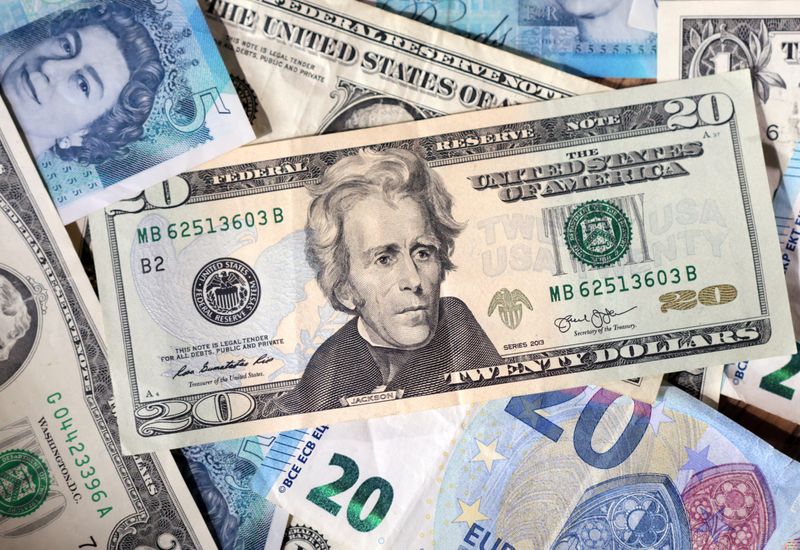
By Saqib Iqbal Ahmed
NEW YORK (Reuters) -The U.S. dollar snapped a two-day losing streak on Thursday as data showed U.S. producer prices increased more than expected in July amid a surge in the costs of services and goods, suggesting a broader pickup in inflation in the months ahead.
The hot measure of inflation at the wholesale level follows the release on Tuesday of a better than feared rise in consumer prices in July, which emboldened traders to boost bets on interest rate cuts from the Federal Reserve in coming months.
While Thursday's data did not upset the case for a September rate cut it did raise worries that tariffs could still stir up inflation in coming months and change the course of interest rate cuts for the rest of the year.
It also hurt the case for the Fed to resume cutting rates with a 50 basis point cut in September, something Treasury Secretary Scott Bessent suggested in an interview on Wednesday.
"I think that was never particularly likely, but presumably this PPI report quashes that," Matt Weller, global head of market research at StoneX.
More importantly the inflation data raises questions about whether the Fed can deliver an aggressive pace of cuts for the rest of the year, he said.
"Some people were saying that we could see three consecutive 25 basis point rate cuts ... but if anything approaching this level of inflation is in place it seems like we might be looking at more of a max of two interest rate cuts and even that might be questionable," Weller said.
While financial markets have priced in an interest rate cut from the Federal Reserve next month, rising services inflation and the expectation tariffs could still significantly boost goods prices left some economists doubtful of an aggressive resumption in policy easing in the absence of further labor market deterioration.
Traders still see a Fed rate cut on September 17 as a near certainty, according to LSEG data.
The dollar index, measuring the currency against a basket of peers, was 0.5% higher at 98.17. The euro was 0.5% weaker at $1.16485 while the British pound eased 0.3% to $1.3538.
Still, analysts warned against expecting a sustained rebound in the buck.
"The market is very much likely to remain ‘all in’ on the idea of a September cut, at least until we hear from Powell at Jackson Hole next week," Michael Brown, market analyst at online broker Pepperstone in London, said, referring to the Fed's Jackson Hole Economic Symposium later this month.
The yen rose against the dollar earlier in the session after Bessent suggested the Bank of Japan needs to raise rates again soon, before ceding ground to trade about flat on the day at 147.385 yen to a dollar.
The stronger greenback weighed on the Australian dollar even as upbeat jobs data calmed concerns about a downturn in the labour market and lessened the need for another rate cut in the very near term. The Aussie was last down 0.8% to $0.6493..
Meanwhile, bitcoin earlier hit its first record peak since July 14, pushing as high as $124,480.82 before trimming gains and was last down nearly 4% at around $118,536.
Bitcoin was already underpinned by increased institutional money flows this year in the wake of a spate of regulatory changes spearheaded by Trump, who has billed himself the "cryptocurrency president."
In the latest move, an executive order last week paved the way to allow crypto assets in 401(k) retirement accounts.
"Corporate treasuries like MicroStrategy and Block Inc. continue to buy bitcoin," said IG analyst Tony Sycamore.
(Reporting by Saqib Iqbal Ahmed; Additional reporting by Kevin Buckland in Tokyo and Lucy Raitano in London; Editing by Shri Navaratnam; Editing by Sam Holmes, Jane Merriman and Giles Elgood)

 Reuters US Business
Reuters US Business
 New York Post
New York Post ICE News
ICE News Daily Voice
Daily Voice CBS News
CBS News WENY News
WENY News MPR News Crime
MPR News Crime AlterNet
AlterNet